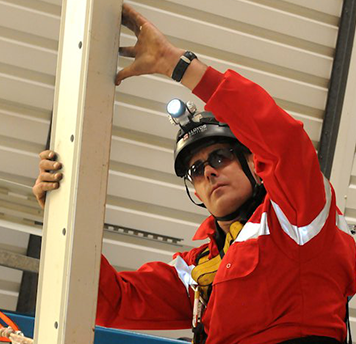In a 2020 report, HSE discovered that one-quarter of fatal workplace accidents in 2020 were falls at height, the largest single cause of fatal accidents in UK workplaces. This poignant statistic is made all the more tragic because a vast majority (if not all) of these accidents were entirely preventable.
Fall protection and mitigating the risk of working at height have to be at the forefront of any organisation that asks its employees to work at height. While there are a series of questions you can ask yourself to assess the safety of your team while working at height, there are three different types of fall protection systems: elimination, prevention, and arrest.
In this blog, we’ll expand on these systems, from the safest to the least safe form of safety protocol, what do these terms actually mean for you and your workers? And when should they be used?
Let’s find out.
The safest way to prevent a fall is to remove employees requirement to work at height, and finding ways to complete tasks on the ground.
Although some tasks require a worker to be elevated, such as constructing a roof or inspecting a building, this does not mean that the majority of the task needs to be done at height. To avoid fall risk, do as many of these assignments as possible on the ground.
Some possible ideas are:
Using new technology, working at height is more preventable than ever before. The Royal Opera house installed a 36-ton, 28m span overhead gantry system to move equipment and scenery, eliminating the need for workers to be at a height. Similarly, Thames Water is now preventing falls and saving £95,000 per year by using drones to support their hands-on inspections by engineers, inspecting scaffolds, cranes, and buildings.
By planning ahead, see how you can use technology or forward thinking to eliminate the need for workers to be working from a height.
Sometimes, working at height is unavoidable. In order to ensure everyone’s safety, create a fall prevention plan and utilise fall guards and restraints to make sure you are eliminating risks where possible.
Fall guards are the use of either guards, rails, or other barricades to prevent a worker from falling. These are typically places:
Although you may be working on the ground or a flat surface, this does not necessarily mean there are no risks of falling. If you are working near a weak or open surface, such as a skylight or near open man-holes for example, use a fall guard to prevent any accident from happening.
If you do need to work at height, however, a fall restraint should always be used before a fall arrest system.

If you have analysed the task at hand and there is no way you can prevent or eliminate a fall, you need to implement a fall arrest system.
A fall arrest system is defined as a way to anchor the user to the workplace structure by a series of interconnected components that, if a fall should take place, will stop the user mid-air.
This is arguably the least safe method of protection, as it is not there to prevent someone from falling, but will only kick in once the employee has fallen. In an ideal world, you never want a fall arrest system to be activated but always want to have one available… just in case.
There are two categories when working at height:
At Lloyds British, one of the most popular fall arrest systems we install are self-retracting lifelines (SRL units), secured to a structure via an EN 795 anchor point.
SRL units are secured to the structure, above head height, and are secured to the front or rear attachment point of the operator's safety harness If someone does fall, the fall arrest block will immediately activate, stopping the user from falling, working similar to a car seat belt.
For both fall prevention and fall arrest, extensive and ongoing training is needed to ensure the safety of your team.
As well as inspecting the lanyard or guards before and after every use, you must maintain and care for the safety equipment.
A fall arrest should only be used as a last resort, as the potential for injury is still high.
Want to see our safety equipment first hand? Get an onsite demonstration of our top-of-the-range safety equipment with an introduction on how to use it by our expert, Stephen Knight:
Ultimately, the best way to prevent a fall is to eliminate the risk entirely.
No matter what height you or your team are working at, you should always consider if you can eliminate or prevent a fall. If not, utilise fall arrest systems to avoid a serious injury from occurring.
Where possible, do as much of the physical labour on the ground.
While you can train your employees to use the ‘3 points of contact’ rule when working at height, ultimately PPE needs to be enforced to guarantee the safety of your team.
Get our expert knowledge delivered straight to your inbox, and keep up-to-date with the latest goings on in your industry.
Falls from a height continue to be the most common kind of fatal injury in the workplace for the 4th year running - with 171 fatal injuries from 2016-2021 being due to falls from a height. You may be ...
In 2005, the Work at Height Regulations (2005) were introduced to ensure the safety of those who work at potentially dangerous heights and they are still in place today. What does all this legal jargo...
According to HSE, you should be taking vital steps to protect your team when working at height. One way to minimise the likelihood of an accident is through the use of a Fall Arrest System.